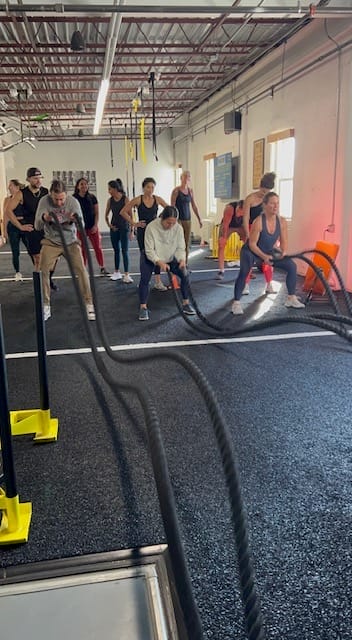
If you want to get fit, lose weight or add muscle, how long do your workouts need to be?
The answer will depend on who’s asking and what the person’s exact goals are. But here are some general guidelines.
The average person who wants to improve general fitness and health can accomplish a great deal in 60 minutes. This is a nice block of time that allows for a solid warmup, specifically programmed work and a cooldown. But that doesn’t mean you can only train in 60-minute blocks. And keep in mind that you usually won’t spend all 60 minutes “working.”
Some focused people who warm up quickly and move fast find that about half an hour gives them all the time they need. A few people use even less time, but they’re rare. And some people will train for 60-120 minutes or more—think about a runner who’s preparing for a half-marathon, for example.
Your style of training will also affect workout length. Endurance training often takes more time. And if you’re trying to build great strength, it can take a long time to warm up to very heavy loads and then perform five or more work sets with five minutes of rest in between each set. High-intensity workouts are often much shorter (more on that below).
Whatever you’re trying to accomplish, the key is to ensure you warm up sufficiently, then do just enough work to make your body respond.
If you don’t do enough work, you won’t get any results. Think about lifting a fork 10 times: it won’t have any effect on your body. But lifting a 40-lb. dumbbell 10 times might.
On the other side of the coin, if you do too much work, your body will be so tired that it won’t recover properly, and you’ll have to take additional rest days. Imagine running a marathon: you probably wouldn’t run for two hours the day after.
If you do the right amount of work in the right time frame, you’ll challenge your body without beating it up. It will respond to the exercise by adapting and changing. You’ll gain muscle, lose weight, improve endurance, and so on.
It can be hard for an inexperienced person to know exactly how much to do and how much time to spend in the gym. Some people are inclined to do way too much, and others tend to take it so easy that they don’t get results.
The solution: work with a trained coach who will tailor your program to your history, goals and time constraints. A pro can do this very quickly, and that coach will then monitor your results, recovery and progress to ensure you’re always on track. The trainer will adjust the program regularly as needed.
How Does Intensity Affect Workout Length?

It’s important to note that workout length isn’t the only factor to consider. Intensity is important, too. Think of the fork again. Even if you lift that fork for 40 minutes straight, your body won’t change very much. But if you lift a heavy load eight times in 25 or 30 seconds, rest for 60 seconds and repeat that cycle two more times, you can expect your body to respond.
Another example: a fit person might walk for 90 minutes without many benefits. But if you pushed the same person to run five kilometers as fast as possible, he or she could expect improvements in aerobic conditioning.
It’s not always about how long or how much you work. Progress is made by working at the correct intensity for the correct amount of time, then resting appropriately.
So don’t judge your workouts only by the clock. We’ve seen four-minute workouts that packed an incredible punch and two-hour workouts that weren’t very effective at all.
For Best Results, Consult a Professional
The best plan is to talk to a coach about your exact fitness goals. Be sure to tell the coach about your training history and the amount of time you have available to work out. A professional can put together the perfect plan and make sure it’s always taking you toward your goals. Did we mention its really fun!?! Just check out our Instagram page HERE .
We offer free consultations and would be happy to make a plan with you. To talk to us about your goals, book a consultation today NO SWEAT INTRO or visit FitFoundry.com to purchase our 15 Day Trial Experience.

